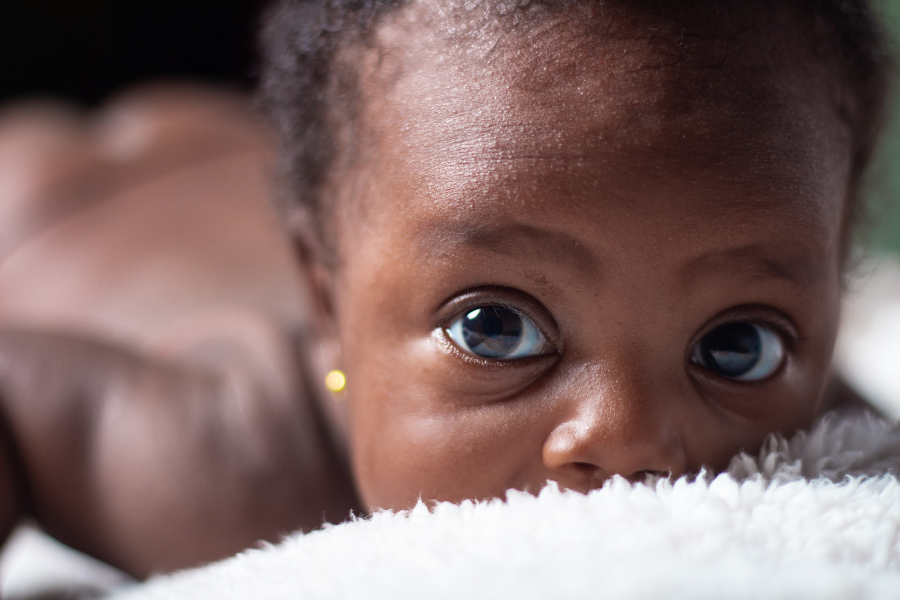- Main Branch - Lavington Clinic, Jacaranda 25,Jacaranda Avenue Off James Gichuru Rd
- Call: +254-715186034
Eye Diseases in Children
- Home
- Eye Diseases in Children

Eye diseases in children either occur at birth or
Although glaucoma mainly affects adults, children can also be born with glaucoma (congenital glaucoma) or it can develop as they grow. Glaucoma in children often manifests with tearing, sensitivity to light, cloudiness of the cornea (the clear front part of the eye) and an eye that appears unusually big. If not diagnosed and managed early, glaucoma in children can lead to blindness.
At Eagle Eye Laser Centre we have an experienced glaucoma specialist who is able to successfully manage glaucoma in children. Please contact us for an appointment.
Epiphora is a condition where the tears do not drain properly and end up pouring out of the eyes resulting in persistent tearing. In children this is as a result of being born with blocked tear drainage ducts. In most children this resolves without treatment by the age of 1 year. In those whom the tearing persists, it may be associated with discharge and swellings near the eye. Such children may require treatment with eye drops, massage or surgery.
If you child has persistent tearing please contact Eagle Eye Laser Centre for an appointment.
Although rare, children can be born with cataract or can develop cataract as they are growing. This will manifest with poor vision as well as an appearance of something white in the eye. Cataract in children needs to be treated as early as possible in order to avoid amblyopia.
The only treatment for cataract in children is surgery but this is more delicate than in adults and requires a surgeon who is highly skilled in cataract surgery. There are many complex issues that require to be addressed when dealing with cataract in children.
At Eagle Eye Laser Centre we have paediatric ophthalmologists who are highly skilled and experienced in treating children with cataract.
If you know or suspect your child has cataract, please contact Eagle Eye Laser Centre for an appointment.
Albinism is a genetic condition where one is born with low levels or absence of the normal pigmentation (melanin). Melanin is what gives one the colour of their skin, hair and eyes.
People with albinism often have lighter coloured skin and hair than the other members of their family or ethnic group. They also have vision problems including:
- Nystagmus:Abnormal uncontrollable rapid eye movements.
- Squint (Strabismus): Where the two eyes are not aligned.
- Amblyopia.
- Refractive errors: Myopia, hypermetropia and Astigmatism
- Photophobia:The eyes are particularly sensitive to light.
- Optic nerve problems:underdeveloped optic nerve leading to impairment vision.
Management of these problems include: glasses, attaching special telescopic lenses to glasses, using dark glasses for photophobia, using a large computer screen or high contrast print material, installing software that converts text to speech and using a brightly coloured ball when playing games.
When babies are born, the centre for vision in their brain is not fully developed. For normal development of this centre, the baby needs visual stimulation. If the eye of a baby has any problem that prevents it from seeing well, the centre for vision for the particular eye does not develop and the brain just ignores that eye. This can also happen if both eyes are unable to see well. If the reason for poor vision is not addressed early, the centre for vision in the brain becomes dormant and even if the eye problem is addressed later on, the eye will still have poor vision. This is known as amblyopia or lazy eye. Often the eye/eyes appear completely normal but are unable to see well. In some cases the eye will develop a squint. For this reason it is important to address any eye problem in a child promptly.
Treatment of amblyopia include correcting the underlying reason for poor vision as well as patching the good eye in order to stimulate the weak eye.
If your child has any eye problem please contact Eagle Eye Laser Centre for an appointment.
Retinopathy of prematurity is a condition that affects babies who are born preterm (before the due date of delivery). The retina in the eye of a baby matures just before they are born at term. If they are born too early (preterm), the immature retina is at a high risk of damage from the development of abnormal blood vessels. This damage is known as retinopathy of prematurity (ROP).
If not addressed urgently, ROP can result in irreversible blindness in the baby. Many preterm babies end up blind if the ophthalmologist is not consulted early enough. It is very important for a preterm baby to be examined early by an ophthalmologist to ensure any damage is treated before it progresses to loss of vision. Any parent of a preterm baby should request their obstetrician or paediatrician to refer the baby to an ophthalmologist as soon as the baby is born.
Treatment of ROP includes laser, eye injections and surgery.
Please contact Eagle Eye Laser Centre for your preterm baby to be thoroughly examined by an experienced paediatric ophthalmologist.
Retinoblastoma is a cancer that affects the eyes of young children. It can affect one eye or both eyes. If diagnosed and treated early, it is almost 100% curable. Many children in Kenya end up dying from retinoblastoma because they come to hospital too late.
The commonest manifestation of retinoblastoma is a white glow in the eye of the child which is more apparent in the evening when the lights are on. It can also appear as a squint, a red eye or as abnormal movements of the eyes. If neglected the cancer goes out of the eye and can start pushing the eye outwards as well as spread to other parts of the body.
The treatment of retinoblastoma includes removal of the eye if the cancer is too big, chemotherapy and radiotherapy are also used when the cancer is advanced. Once the eye is removed, it is replaced with an artificial eye which cannot see but appears like a real eye. If the cancer is not too big and there is a chance of the eye seeing, the eye can be saved with chemotherapy, laser and freezing treatment (cryotherapy).
The most important thing is to come to hospital early for diagnosis and treatment.
Retinoblastoma is one of the cancers that can be genetic which means it can run in families. Hence it is important for siblings of children with retinoblastoma as well as children of retinoblastoma survivors to be examined by an ophthalmologist.
At Eagle Eye Laser Centre we have the leading specialists in treatment of retinoblastoma, dedicated to saving life and vision of children with retinoblastoma. We also have a skilled team of oculists who are able to make high-quality custom-made artificial (prosthetic) eyes.
